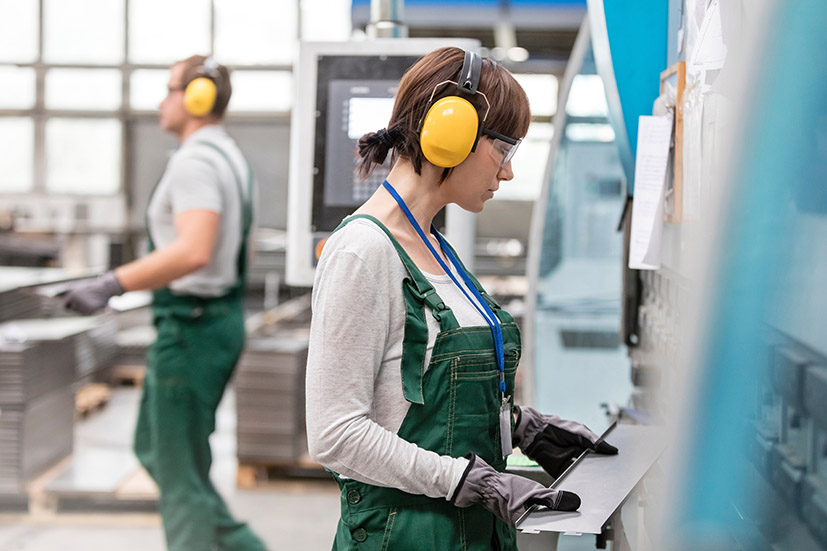Ensuring workplace safety compliance is crucial for any business. In 2024, staying up-to-date with safety regulations can protect employees and avoid legal issues. Here are practical tips to help maintain a safe and compliant workplace.
Regular safety training
Regular safety training is essential to keep all employees aware of current safety protocols. Training sessions should cover potential hazards, emergency procedures, and the proper use of safety equipment. Employees must understand how to report unsafe conditions and the importance of following safety guidelines.
Providing refresher courses is equally important. These sessions help reinforce safety practices and update employees on new regulations. Incorporating practical demonstrations can enhance understanding and retention of safety procedures.
Conduct routine inspections
Routine inspections are vital to identify and rectify potential hazards. Inspections should be thorough, covering all areas of the workplace. This includes checking equipment, ensuring exits are clear, and verifying that safety signs are visible and up-to-date.
Employers should document findings and take immediate action to address any issues. Regular inspections can prevent accidents and ensure compliance with safety regulations. It’s advisable to have a checklist to ensure nothing is overlooked during inspections.
Maintain equipment and infrastructure
Maintaining equipment and infrastructure is a key aspect of workplace safety. Regular maintenance checks can prevent equipment failure and reduce the risk of accidents. This includes inspecting machinery, electrical systems, and other critical infrastructure components.
For electrical safety, it’s important to know how long an EICR lasts. You can contact experts such as Hexo Electrical Testing to see how long an EICR lasts. An Electrical Installation Condition Report (EICR) typically lasts for five years for commercial properties. Regularly updating this report ensures compliance with safety standards.
Implement clear safety policies
Clear safety policies provide a framework for a safe working environment. These policies should outline procedures for handling hazardous materials, emergency response plans, and guidelines for safe working practices. Policies must be accessible to all employees and included in training sessions.
Regularly reviewing and updating these policies is crucial to adapt to new safety regulations and workplace changes. Employees should be encouraged to provide feedback on safety policies, which can help identify gaps and areas for improvement.
Foster a safety culture
Creating a safety culture in the workplace encourages employees to prioritise safety in all their activities. This culture starts with leadership. When management demonstrates a commitment to safety, employees are more likely to follow suit. Regularly communicating the importance of safety and recognising safe practices can reinforce this culture.
Encouraging open communication about safety concerns is also vital. Employees should feel comfortable reporting hazards or suggesting improvements without fear of reprisal. This proactive approach can help identify and mitigate risks before they lead to accidents.
Use technology for safety management
Leveraging technology can enhance workplace safety management. Safety management software can streamline the process of tracking incidents, conducting inspections, and maintaining records. These tools can provide real-time data and analytics to identify trends and areas needing attention.
Additionally, wearable technology, such as smart helmets and vests, can monitor workers’ health and safety in real-time. These devices can detect hazardous conditions, such as high levels of toxic gases, and alert both the worker and management immediately. Implementing such technologies can significantly reduce the risk of accidents and improve overall safety compliance.
Regularly review safety procedures
Regular reviews of safety procedures ensure they remain effective and compliant with current regulations. This involves assessing the efficacy of existing safety measures and making necessary adjustments. These reviews should consider any changes in the workplace, such as new equipment or processes, that might introduce new risks.
Involving employees in these reviews can provide valuable insights. Workers on the front lines often have firsthand knowledge of potential hazards and can offer practical suggestions for improvement. Regularly updating procedures based on these reviews helps maintain a safe working environment.
Ensure proper signage and labelling
Proper signage and labelling are crucial for maintaining safety compliance. Safety signs should be clearly visible and provide essential information about hazards, emergency exits, and safety equipment locations. Labelling hazardous materials with the correct warning symbols and handling instructions is also essential.
Signs and labels should be updated regularly to reflect any changes in safety procedures or workplace layout. Ensuring that all employees understand the meaning of different signs and labels can prevent accidents and improve response times in emergencies.
Ensure adequate personal protective equipment (PPE)
Providing adequate personal protective equipment (PPE) is a fundamental aspect of workplace safety. Employers must ensure that employees have access to the necessary PPE, such as gloves, masks, helmets, and safety glasses, depending on their job roles. It is also important to regularly inspect and replace PPE to ensure it remains effective.
Training employees on the proper use and maintenance of PPE is essential. They need to understand when and how to use each piece of equipment to protect themselves effectively. Ensuring compliance with PPE usage can significantly reduce the risk of injuries and illnesses in the workplace.



